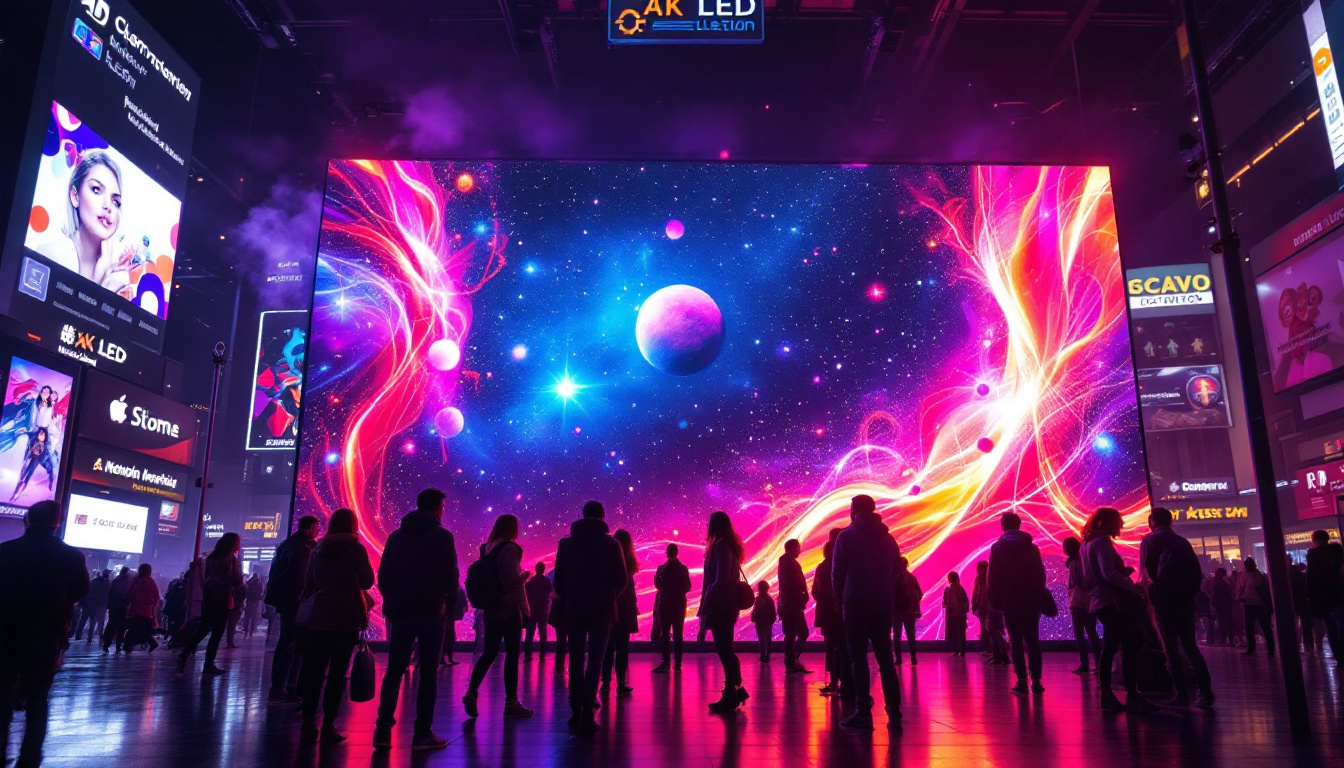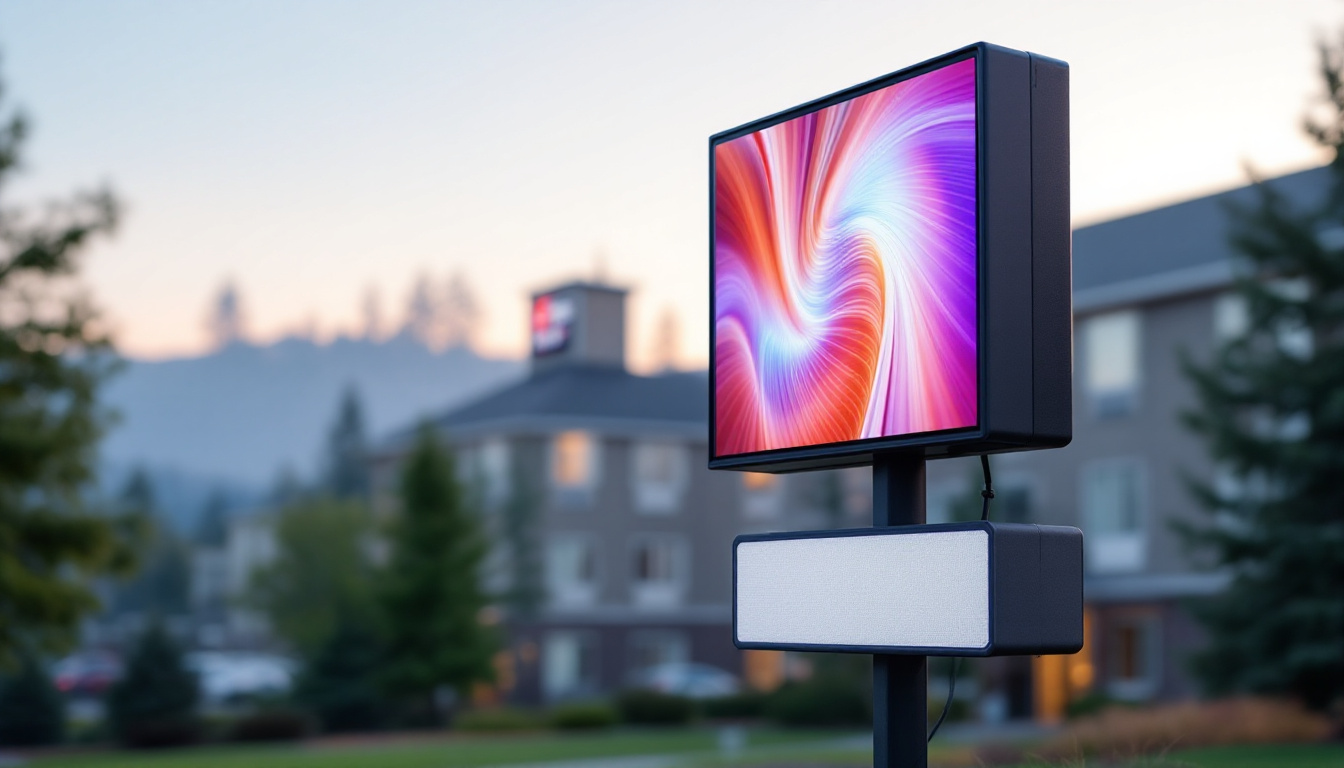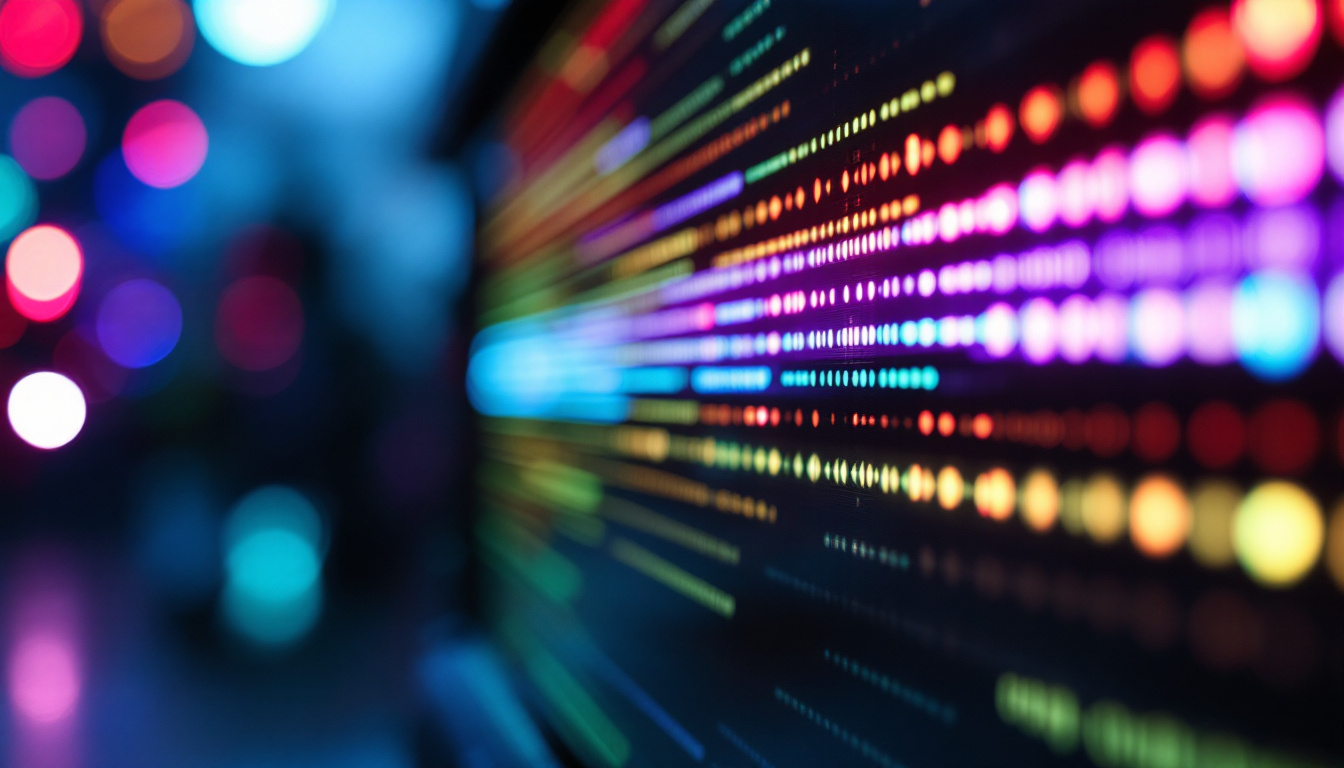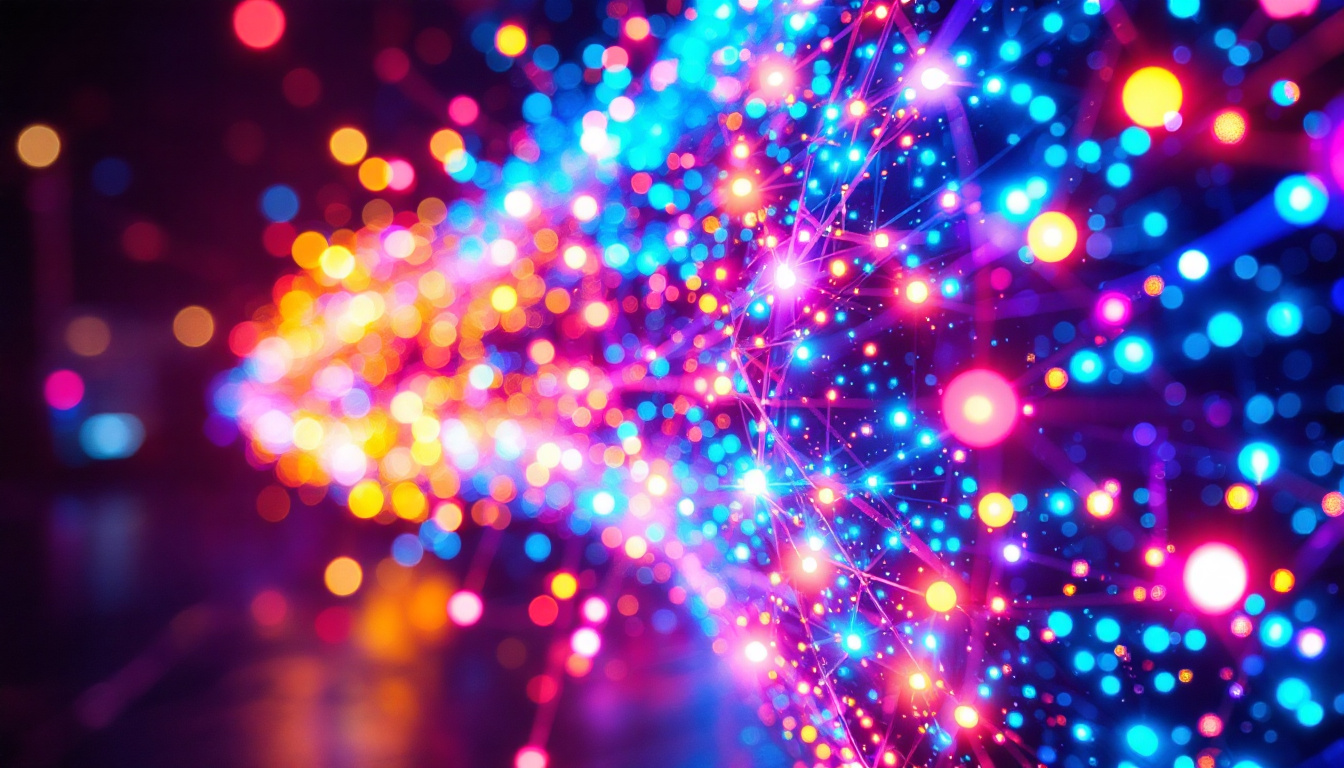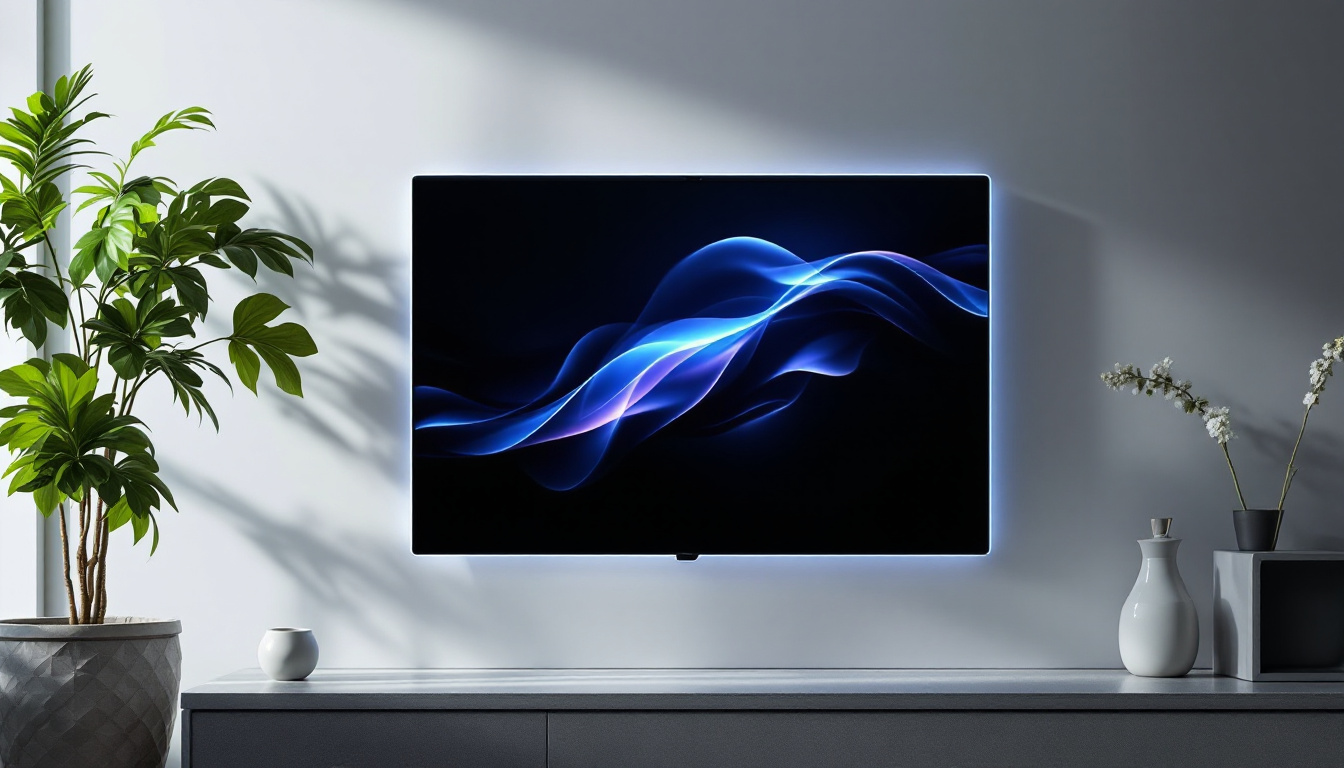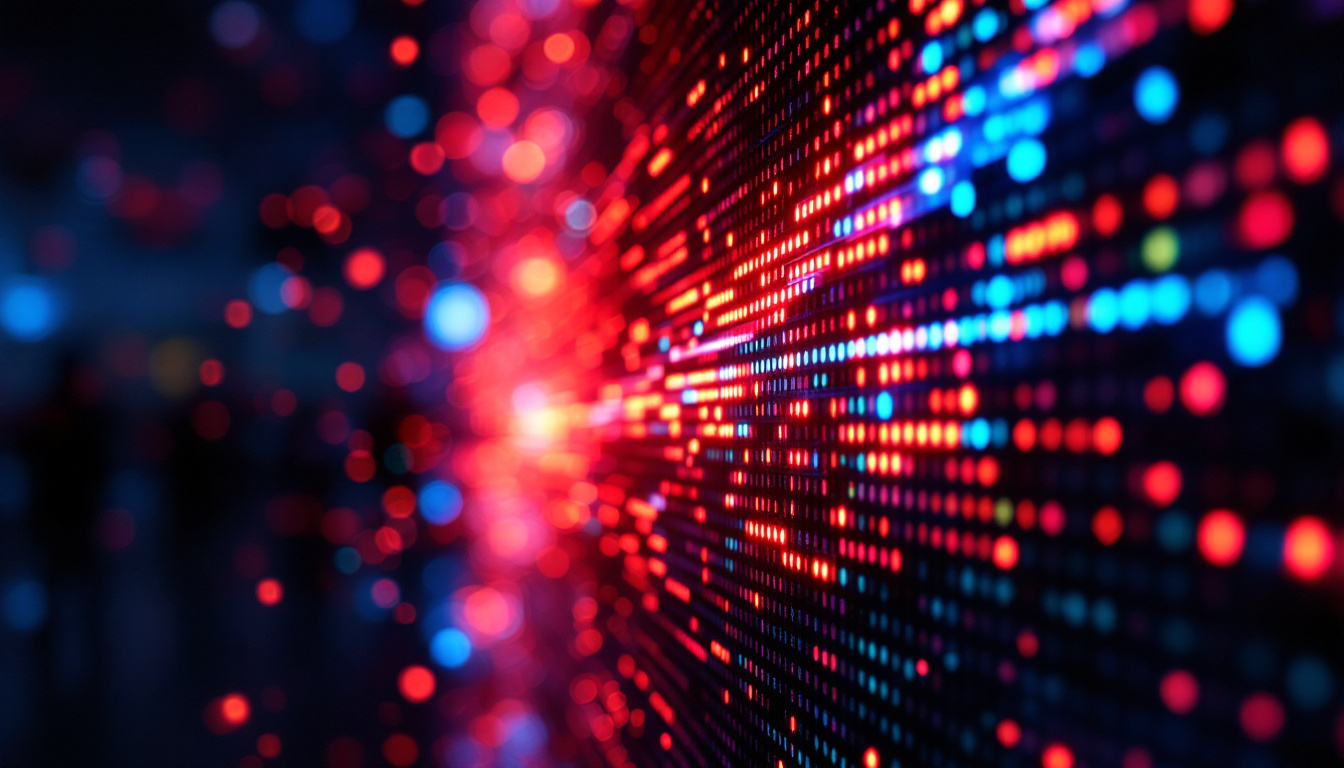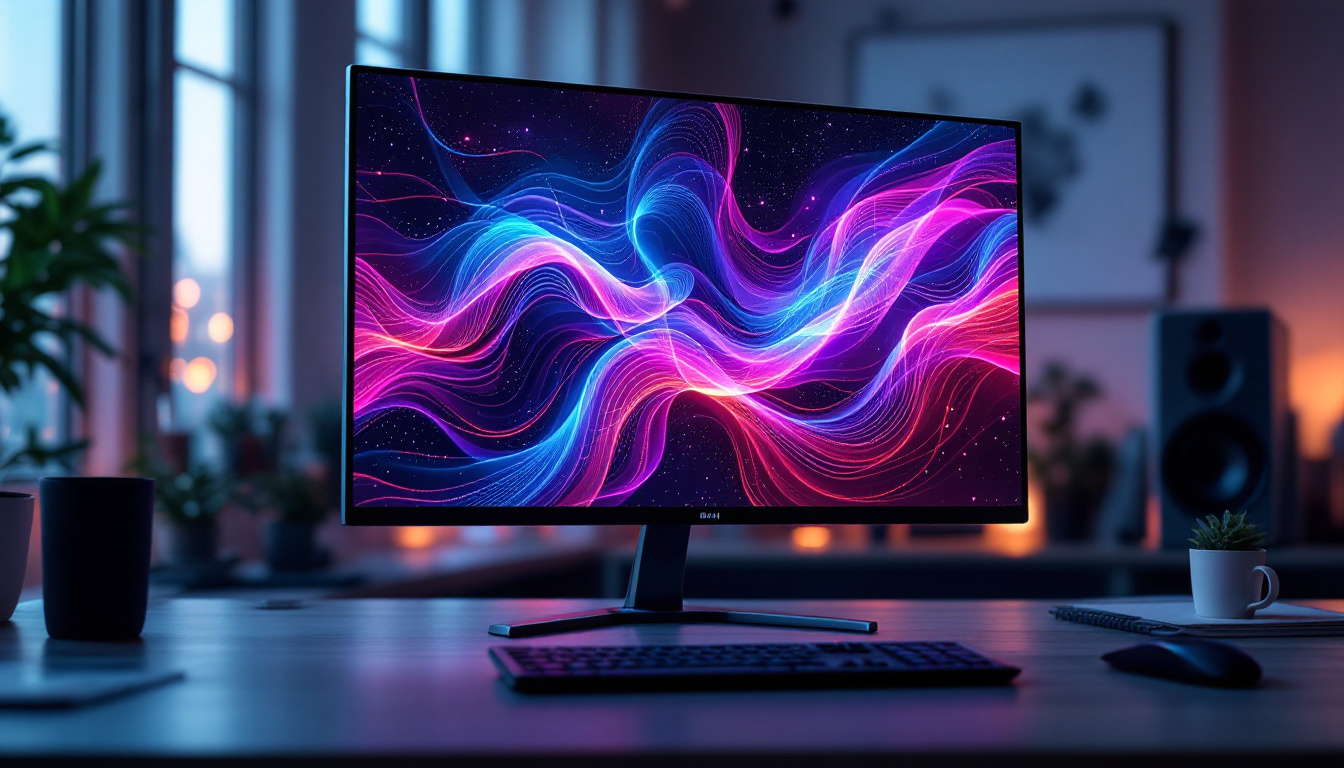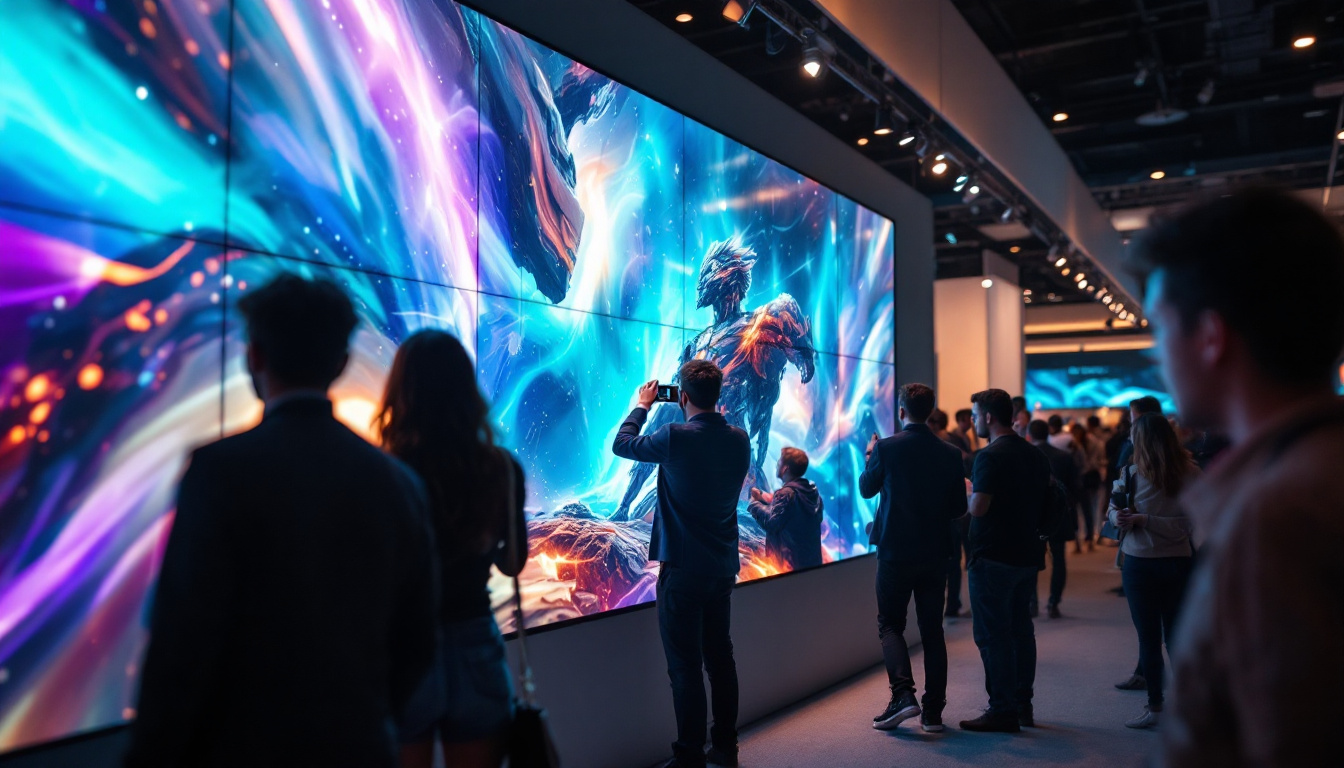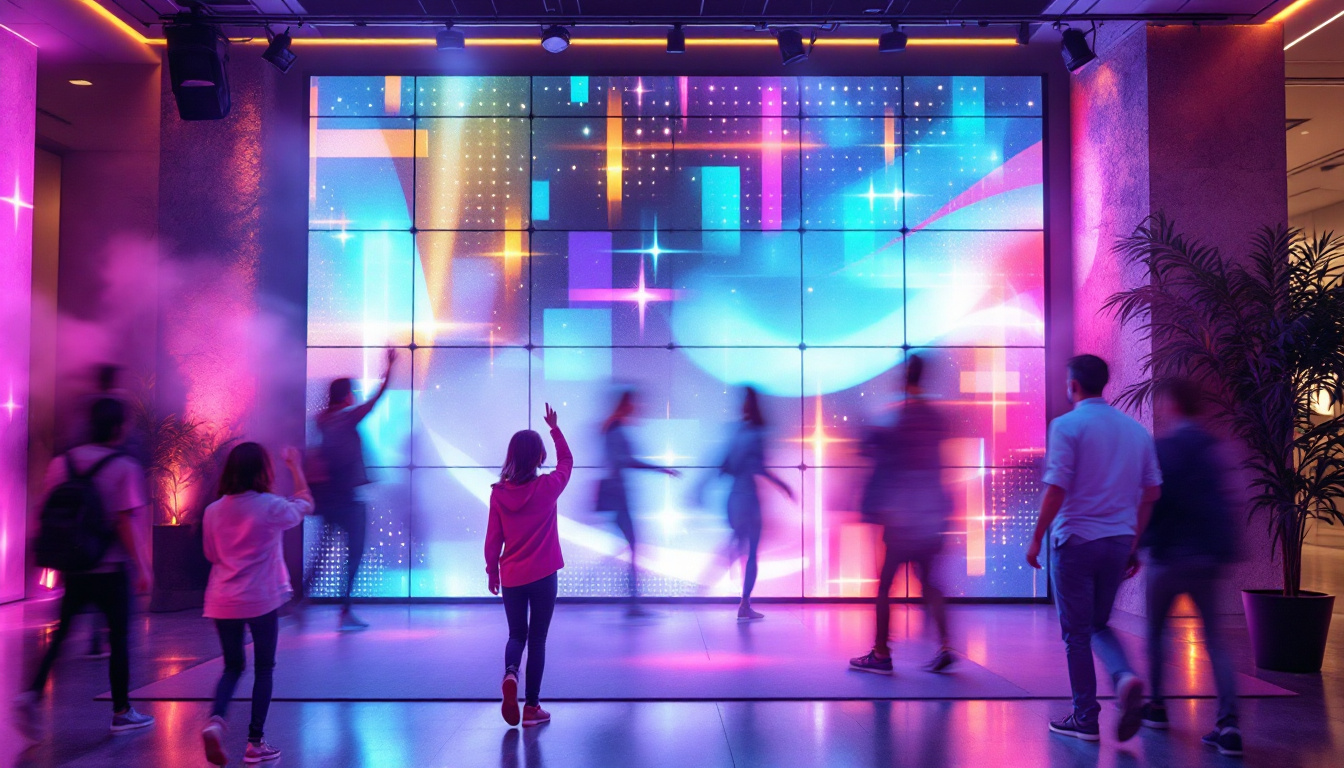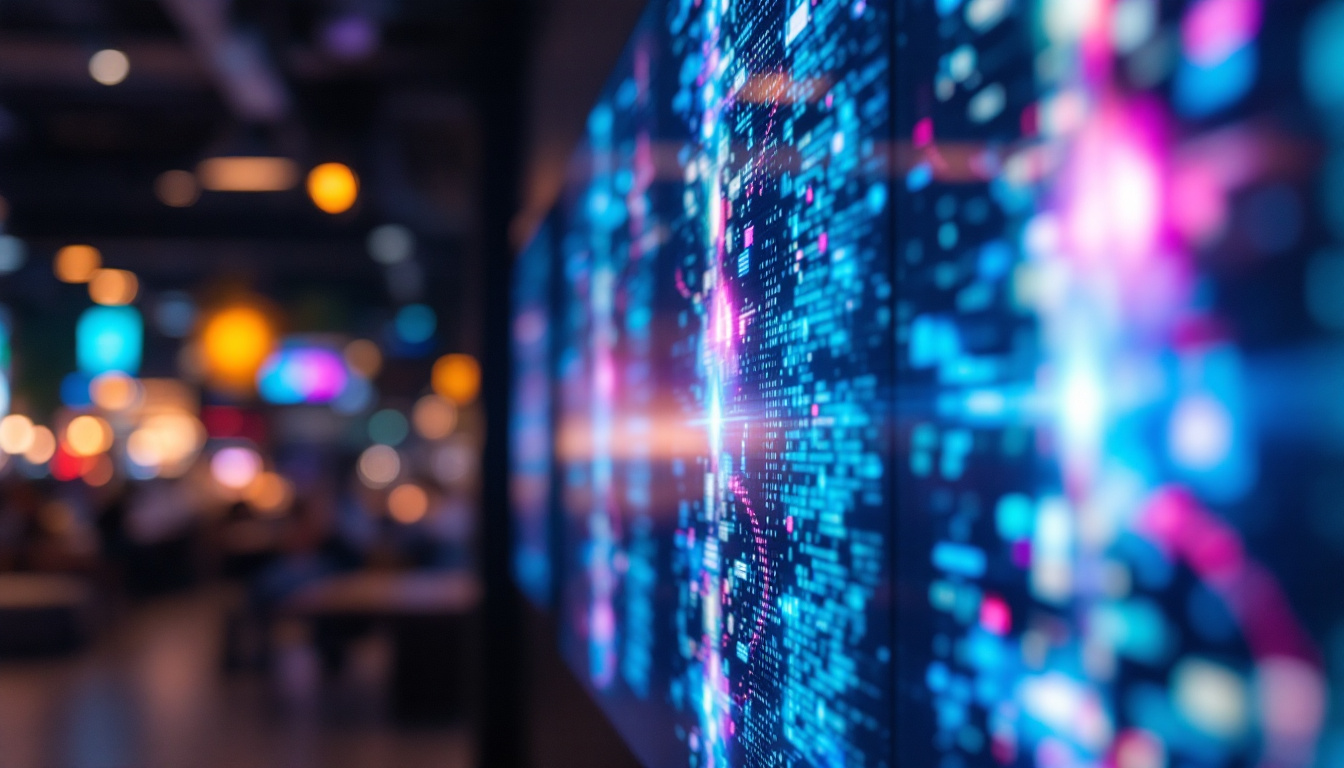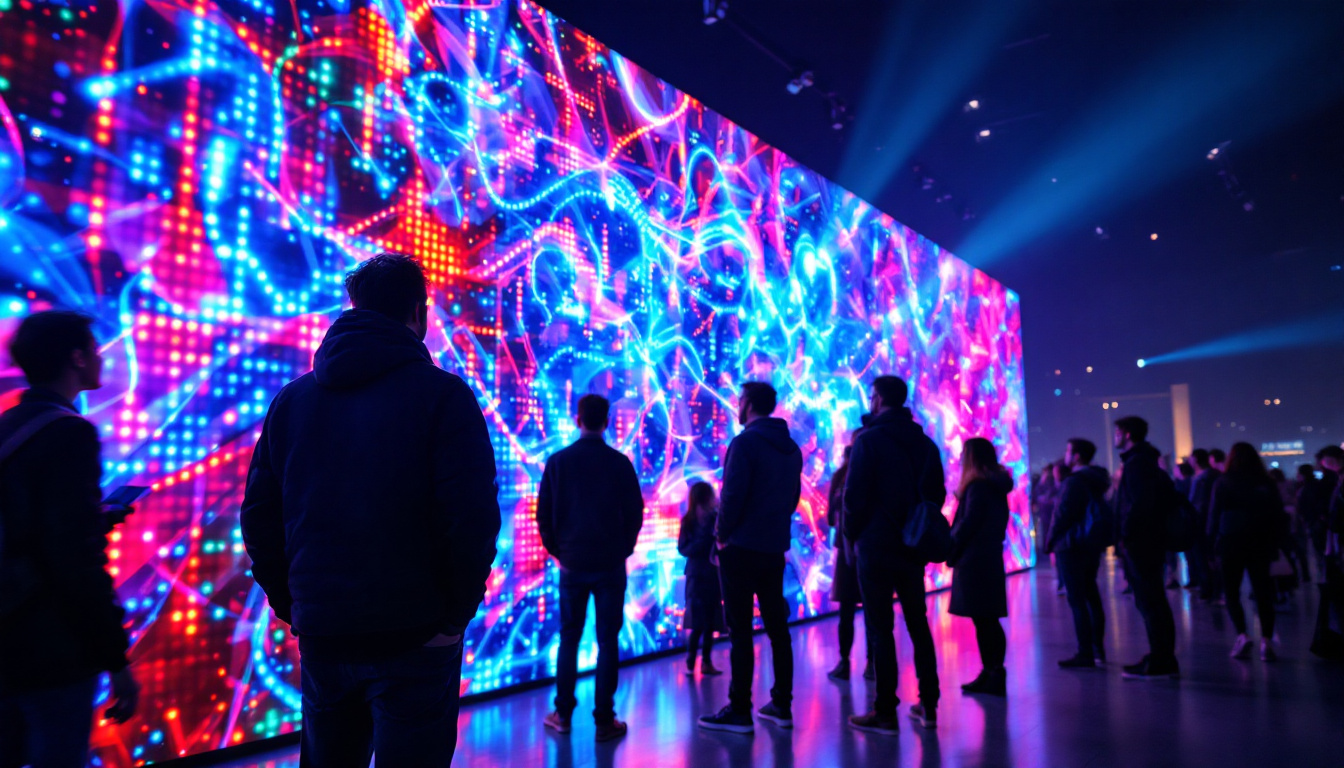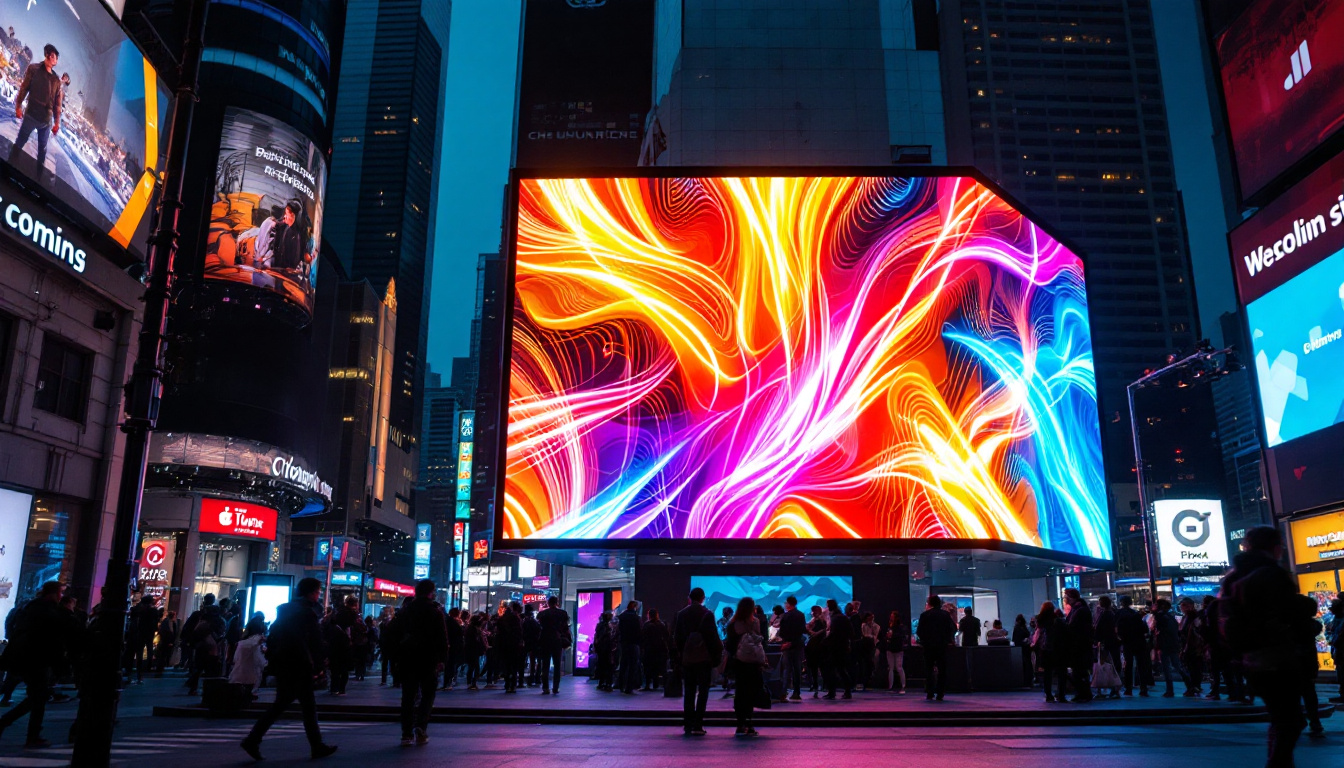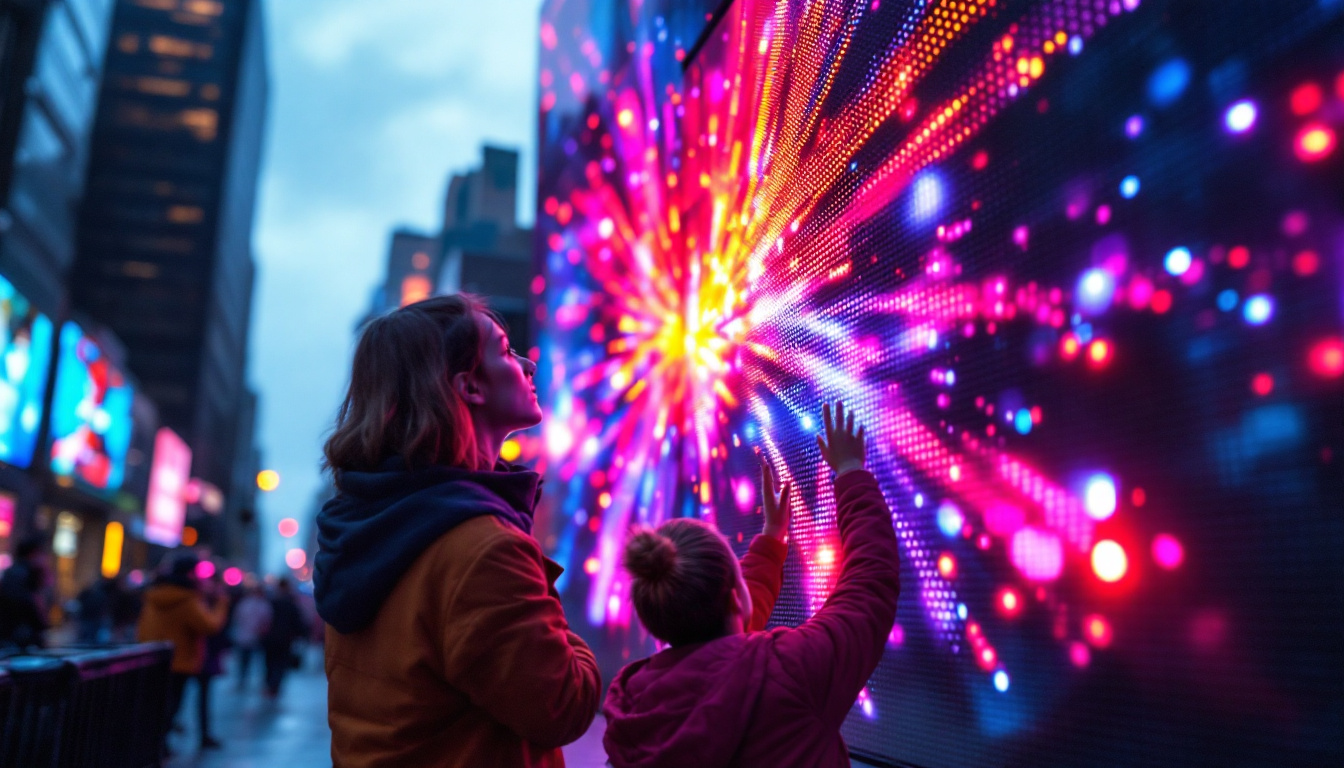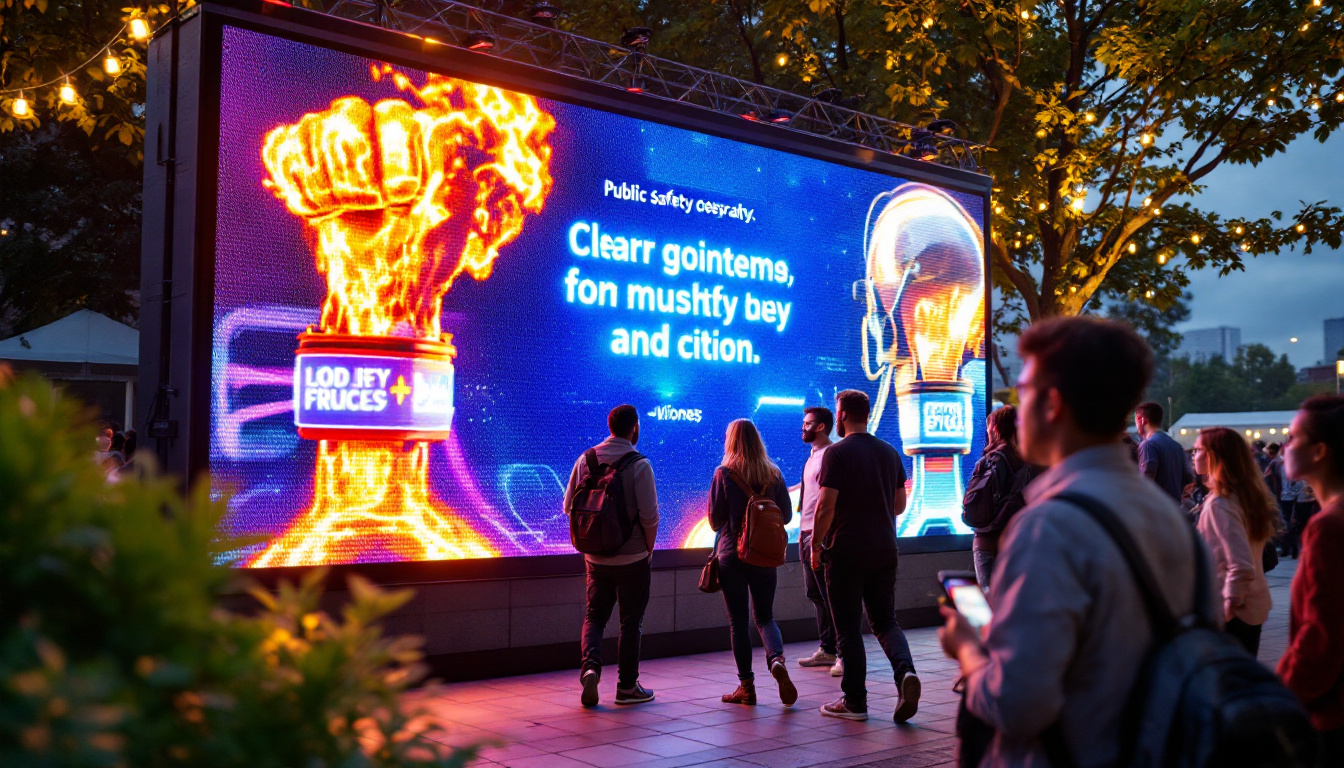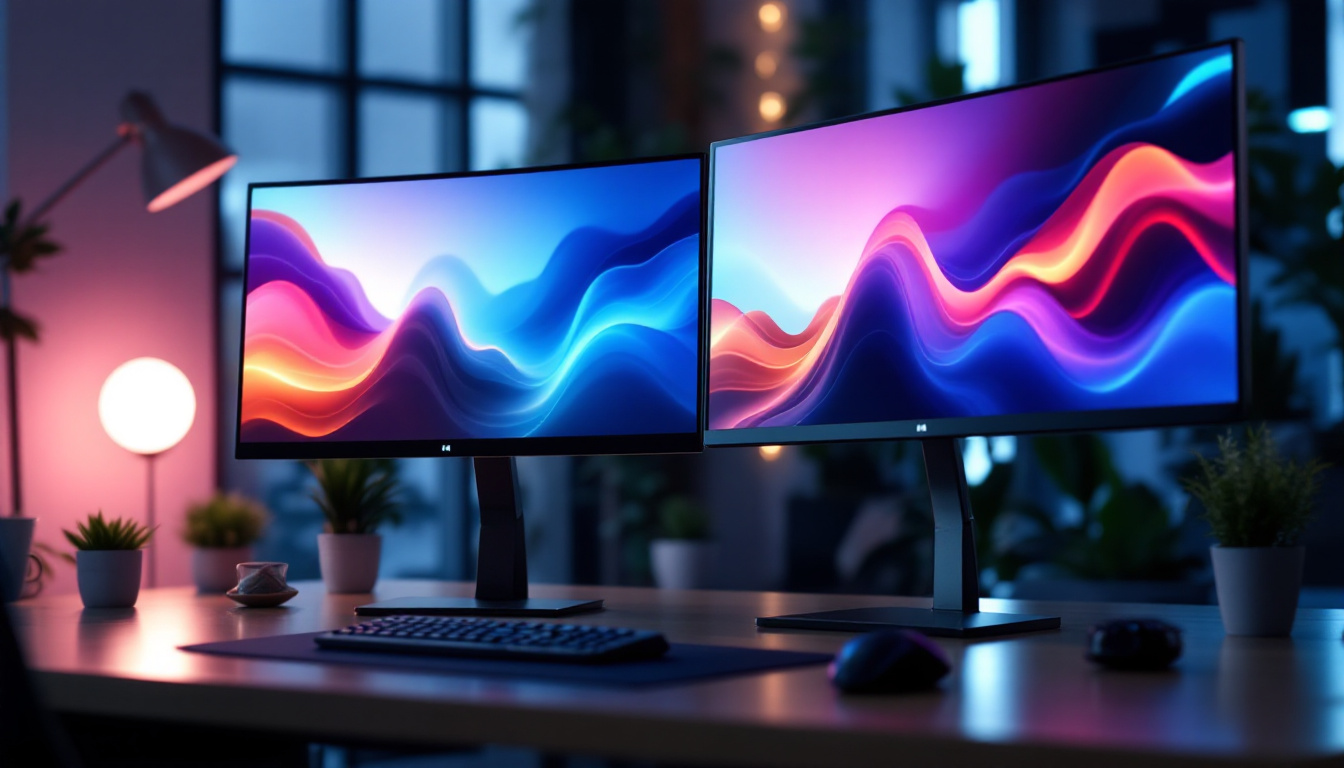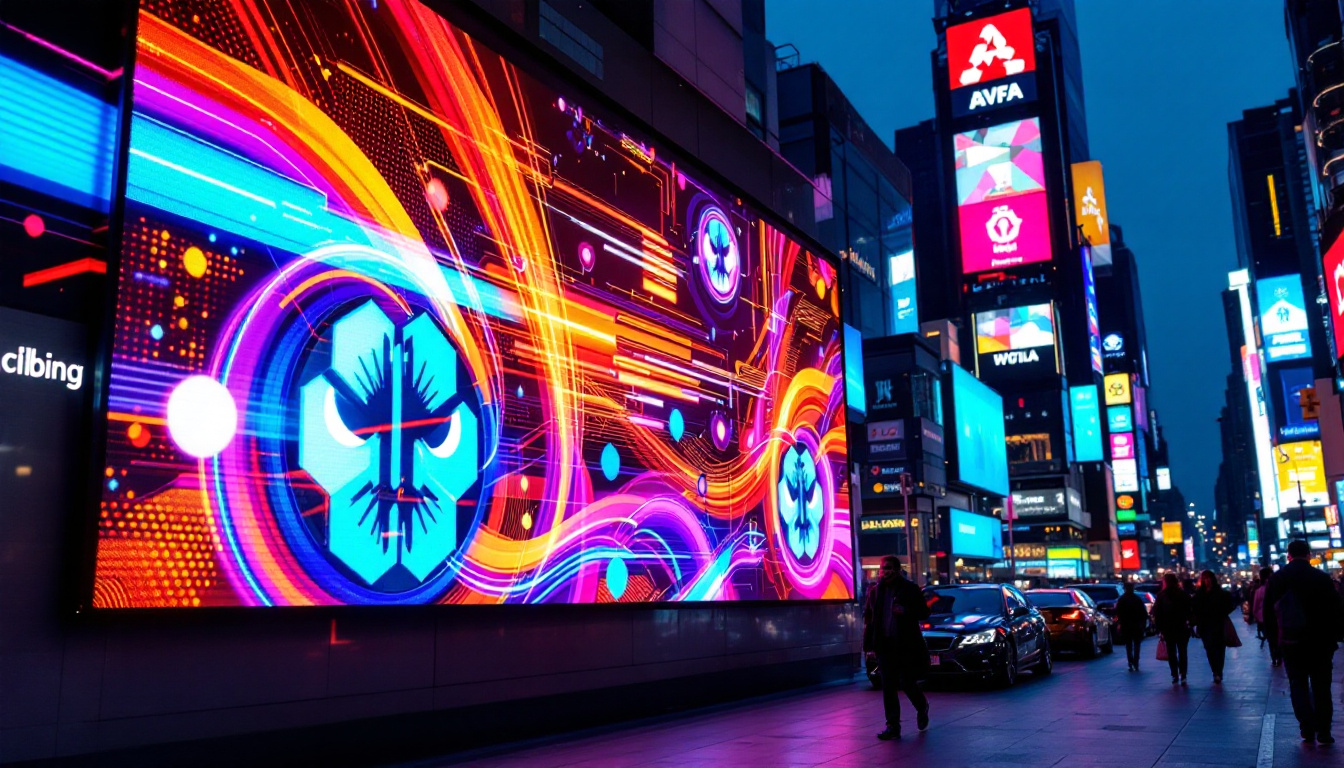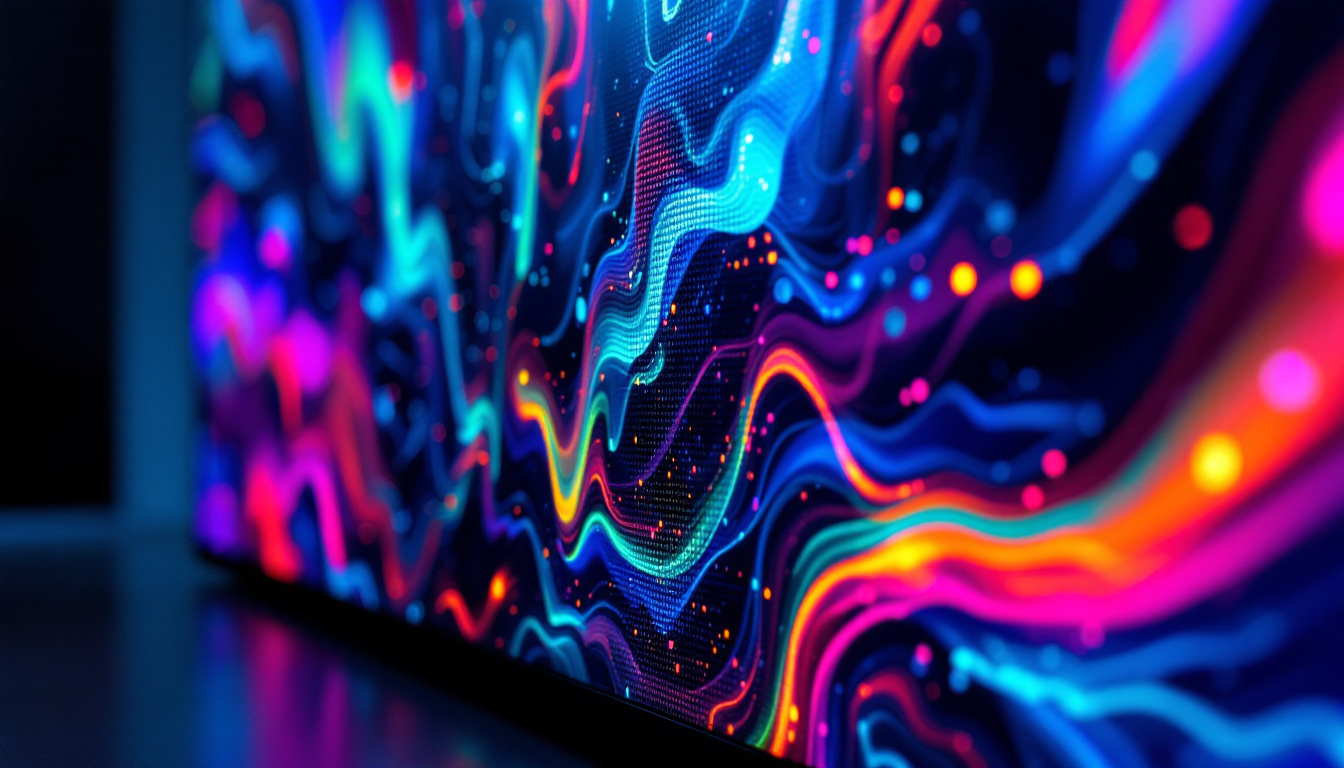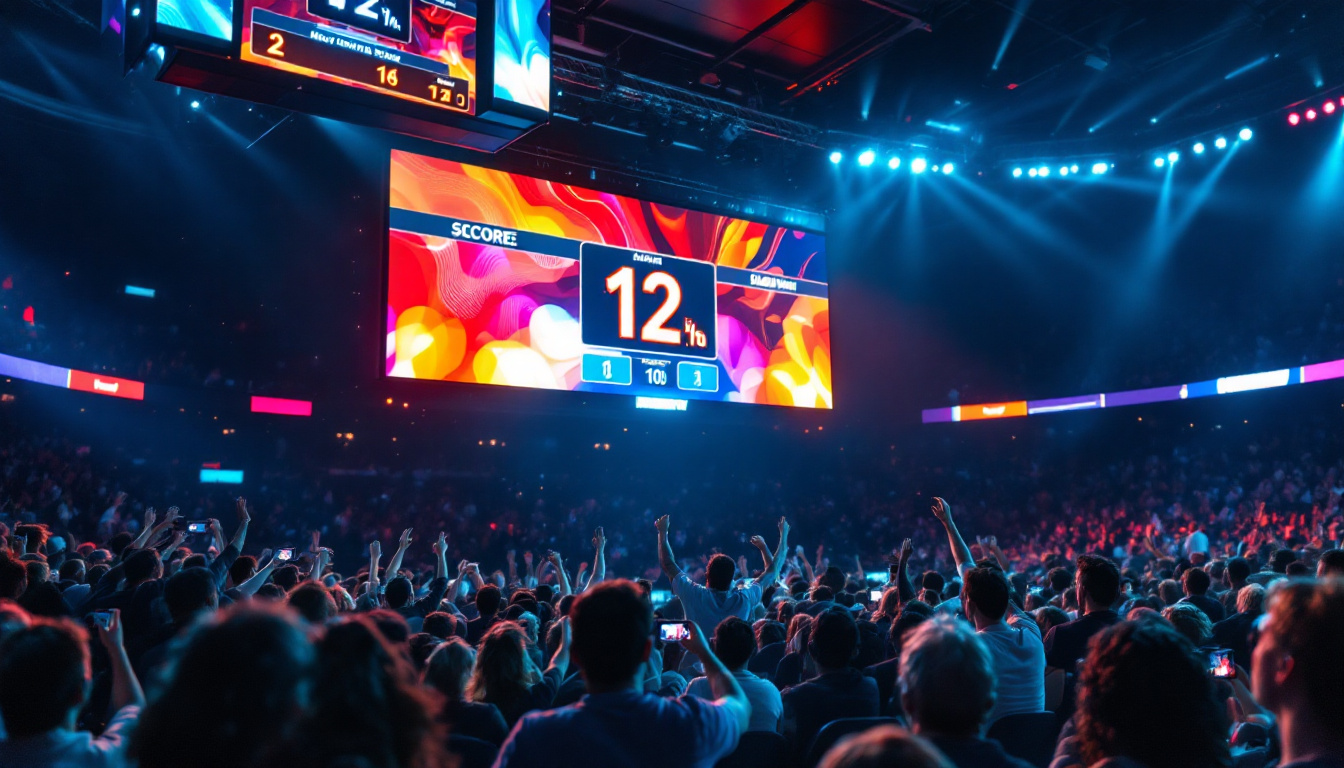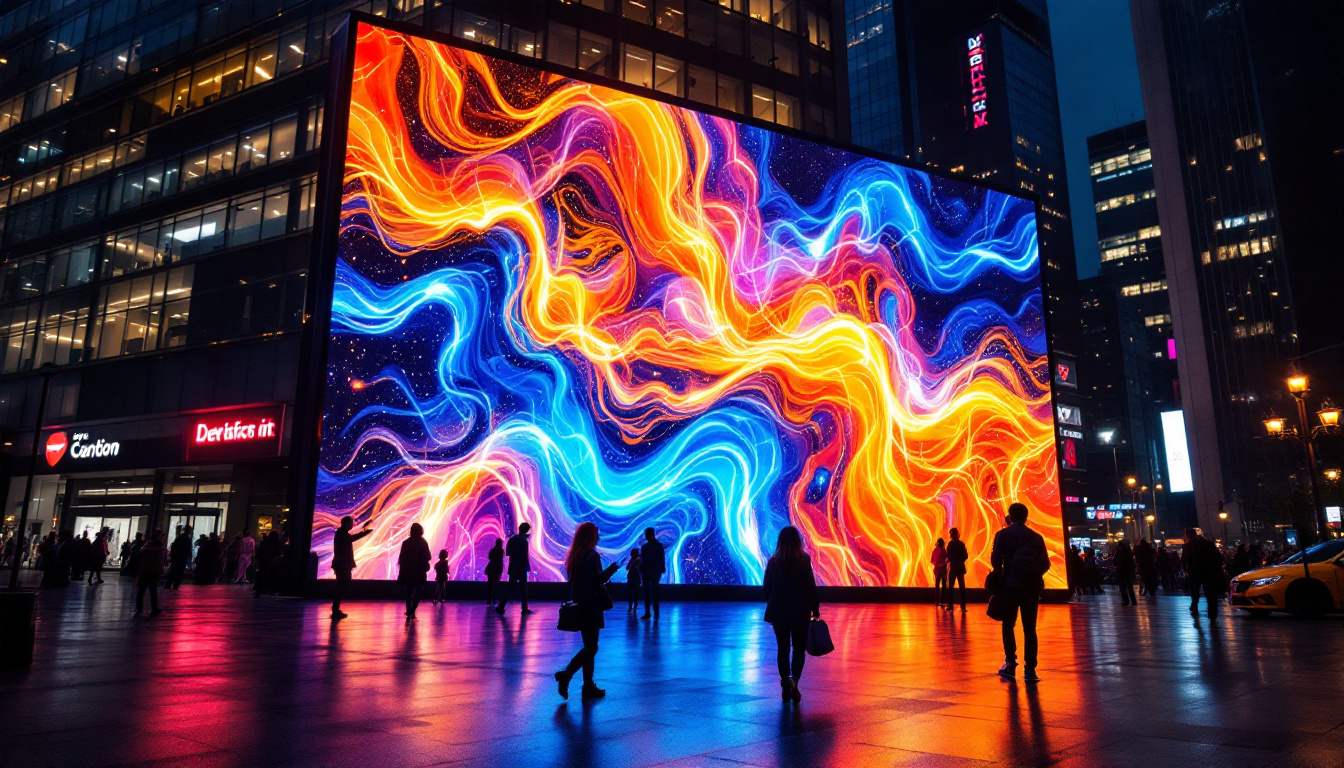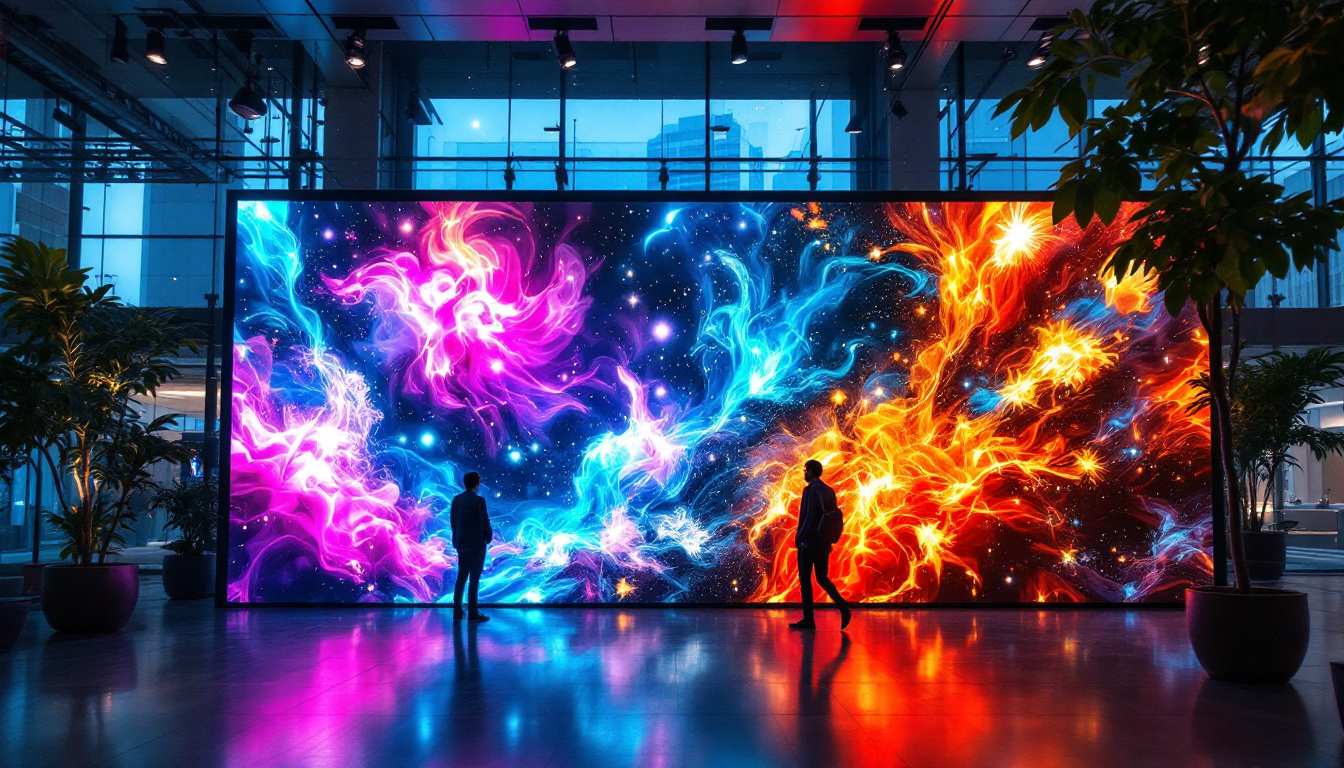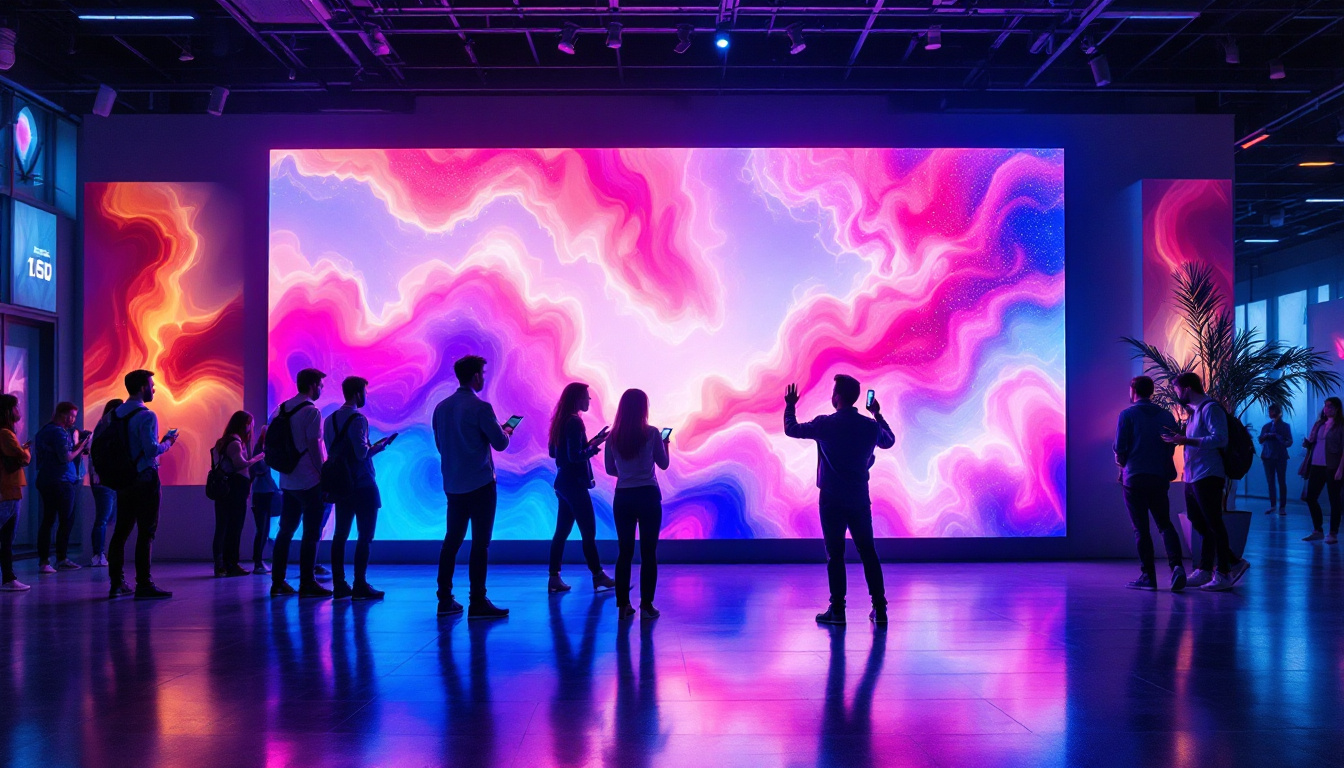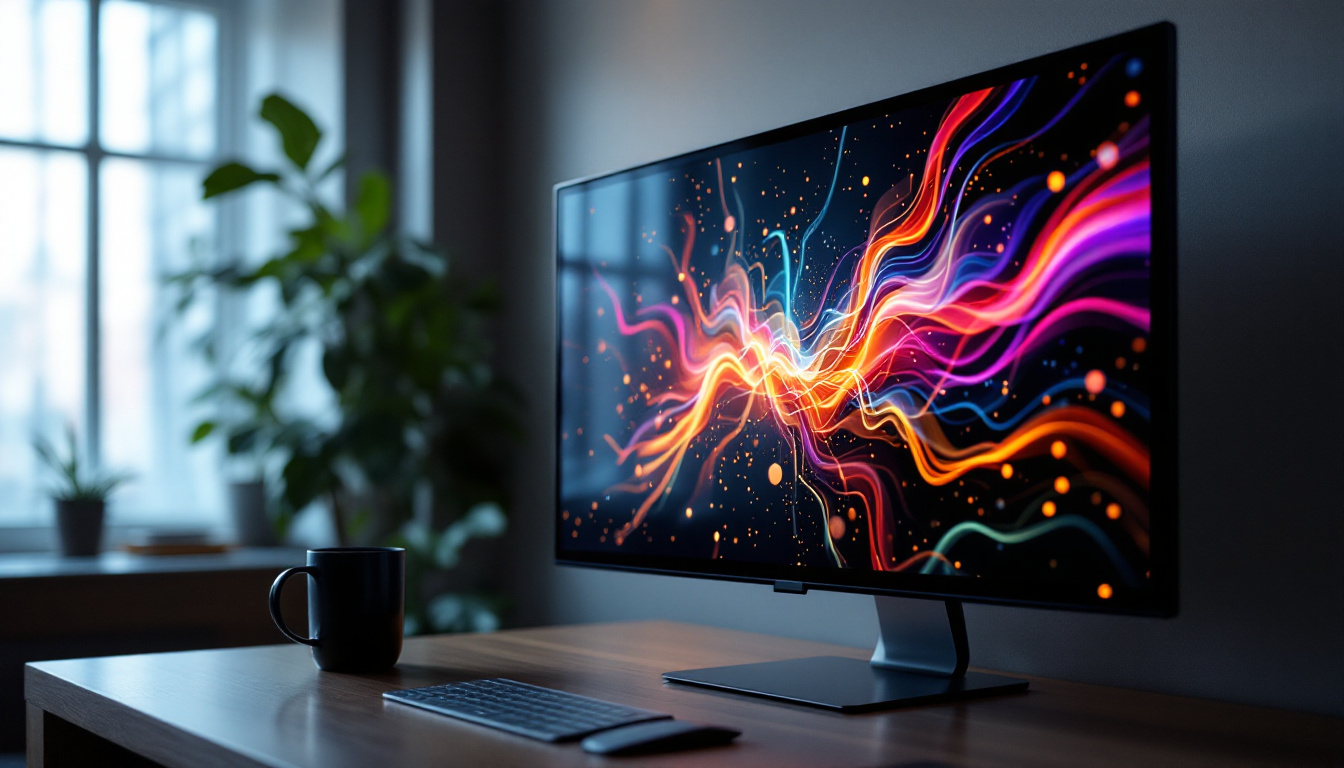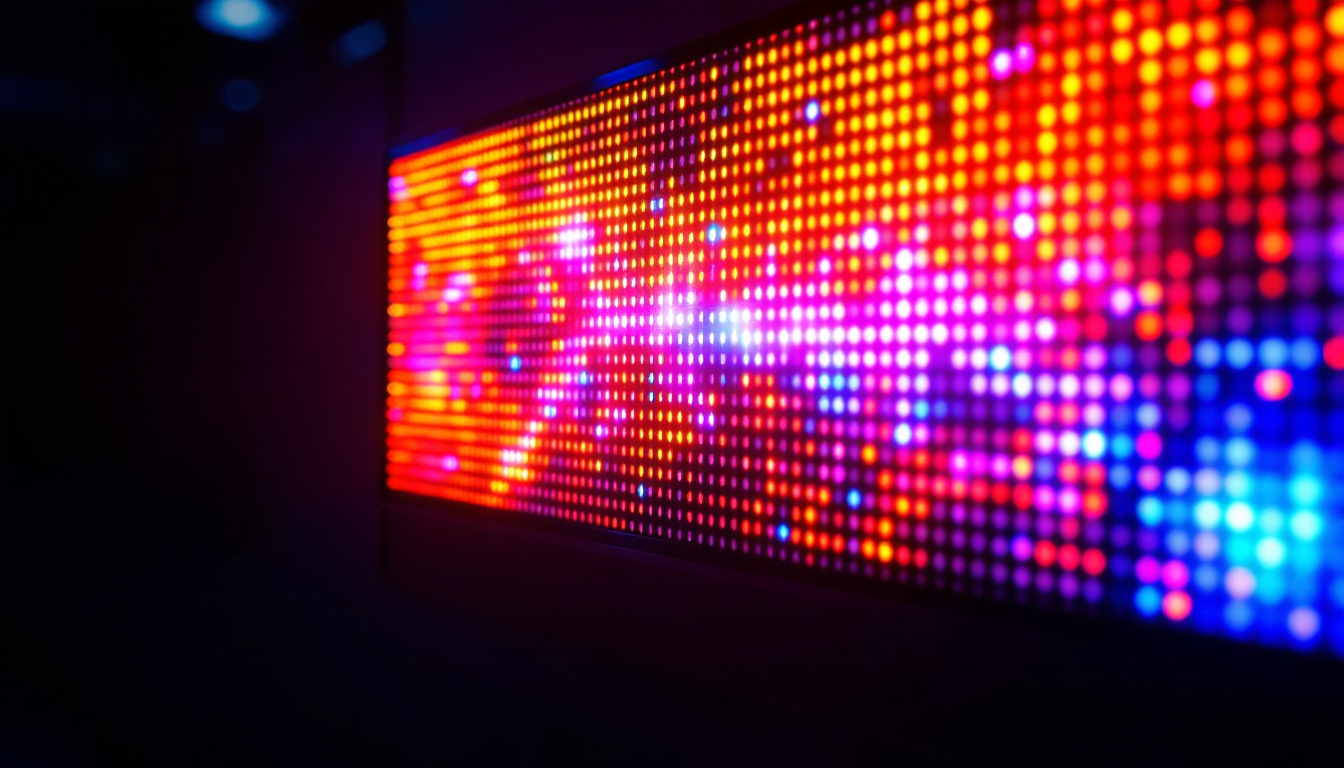Biggest LED Bulb: LED Display Explained
In recent years, LED technology has revolutionized the way we think about lighting and displays. From energy efficiency to vibrant color reproduction, the advantages of LED bulbs are numerous. Among these innovations, the biggest LED bulbs have emerged as a significant trend in both residential and commercial settings. This article delves into the world of LED displays, exploring their features, benefits, and the technology behind them.
Understanding LED Technology
LED, or Light Emitting Diode, is a semiconductor device that emits light when an electric current passes through it. This technology has transformed the lighting industry, offering a more sustainable and efficient alternative to traditional incandescent and fluorescent bulbs. The rise of LED technology has not only changed how we illuminate our spaces but has also sparked innovations in design and functionality, paving the way for smarter and more adaptable lighting solutions.
How LED Works
At the core of an LED bulb is a chip made from a combination of materials, typically gallium, arsenide, and phosphor. When electricity flows through the chip, electrons recombine with holes, releasing energy in the form of photons—this is what produces light. The color of the light emitted depends on the materials used in the chip. For instance, different combinations of phosphor can yield a spectrum of colors, allowing for warm whites, cool whites, and even vibrant hues that can enhance the ambiance of any environment.
One of the key advantages of LED technology is its efficiency. LEDs convert about 80% of the energy they consume into light, while traditional bulbs waste a significant amount of energy as heat. This efficiency not only reduces electricity bills but also contributes to a lower carbon footprint. Moreover, the longevity of LED bulbs—often lasting up to 25,000 hours or more—means fewer replacements and less waste, making them a more environmentally friendly choice over time.
Types of LED Bulbs
LED bulbs come in various types and forms, catering to different applications. Some of the most common types include:
- A19 Bulbs: These are the standard LED bulbs used in homes, resembling traditional incandescent bulbs.
- PAR Bulbs: Often used in recessed lighting and outdoor fixtures, these bulbs provide focused beams of light.
- Smart LED Bulbs: These bulbs can be controlled via smartphones or smart home systems, offering convenience and customization.
Each type of LED bulb has unique features and applications, making them suitable for various environments and purposes. For example, A19 bulbs are perfect for general household lighting, while PAR bulbs excel in spotlighting artwork or landscaping. Smart LED bulbs, on the other hand, allow users to adjust brightness and color remotely, creating dynamic lighting scenarios that can enhance mood or productivity. Additionally, there are specialty LED bulbs designed for specific tasks, such as growing plants indoors, which emit light in wavelengths that promote photosynthesis, showcasing the versatility of LED technology in meeting diverse needs.
The Rise of LED Displays
LED displays have gained immense popularity in recent years, becoming a staple in advertising, entertainment, and information dissemination. Their vibrant colors, high brightness, and versatility make them ideal for a wide range of applications. As technology advances, the capabilities of LED displays continue to evolve, allowing for even more innovative uses and enhanced user experiences. From large-scale installations to compact screens, the flexibility of LED technology has reshaped how we interact with visual media.
Applications of LED Displays
LED displays are used in numerous settings, including:
- Billboards and Signage: LED billboards are commonly seen in urban environments, providing dynamic advertising opportunities. These displays can change content in real-time, allowing advertisers to tailor messages based on time of day, audience demographics, or even current events.
- Sports Arenas: Many sports venues utilize LED displays for scoreboards, instant replays, and fan engagement. The integration of interactive elements, such as live polls and social media feeds, enhances the spectator experience, making every game more immersive.
- Concerts and Events: LED screens enhance the visual experience at concerts, festivals, and other live events. They can be configured in various shapes and sizes, creating stunning backdrops that synchronize with music and performances, captivating audiences in ways that traditional screens cannot.
The ability to display high-resolution images and videos in various lighting conditions makes LED displays a preferred choice for these applications. Moreover, advancements in pixel pitch technology allow for closer viewing distances without sacrificing image quality, further expanding their usability in diverse contexts.
Benefits of LED Displays
The advantages of LED displays extend beyond their visual appeal. Some key benefits include:
- Energy Efficiency: LED displays consume significantly less power compared to traditional display technologies, reducing operational costs. This energy efficiency not only benefits businesses financially but also aligns with growing environmental sustainability efforts.
- Longevity: LED displays have a longer lifespan, often exceeding 100,000 hours, which translates to lower maintenance costs. This durability makes them a wise investment for companies looking to minimize downtime and maximize their advertising reach.
- Brightness and Visibility: LED displays maintain brightness even in direct sunlight, ensuring visibility in various environments. This characteristic is particularly advantageous for outdoor applications, where traditional screens might struggle to compete with natural light.
These benefits contribute to the growing adoption of LED displays across different sectors. Additionally, the rapid advancements in smart technology integration are paving the way for even more sophisticated applications, such as automated content management systems and real-time analytics that allow businesses to optimize their advertising strategies. As the demand for interactive and engaging content continues to rise, LED displays are poised to play a pivotal role in shaping the future of visual communication.
The Technology Behind LED Displays
Understanding the technology behind LED displays is crucial for appreciating their capabilities. The construction and operation of these displays involve several key components.
Pixel Configuration
LED displays are made up of tiny individual units known as pixels. Each pixel typically consists of red, green, and blue (RGB) LEDs. By varying the intensity of each color, a wide spectrum of colors can be created, allowing for high-quality images and videos.
The resolution of an LED display is determined by the pixel pitch, which is the distance between the centers of two adjacent pixels. A smaller pixel pitch results in higher resolution and clearer images, making it ideal for close viewing distances. For instance, a pixel pitch of 2.5mm is often used in indoor displays where viewers are close, while a pitch of 10mm might be more suitable for outdoor signage viewed from a distance. This adaptability in pixel configuration is one of the reasons LED technology has become so popular across various applications, from large billboards to small electronic devices.
Control Systems
LED displays are equipped with sophisticated control systems that manage the content displayed. These systems allow for real-time updates, enabling dynamic content changes based on events or promotions.
Content can be managed through software that interfaces with the display, allowing users to upload images, videos, and animations easily. This flexibility is a significant advantage for businesses looking to engage their audience effectively. Additionally, many modern LED displays come with cloud-based management systems, which allow users to control multiple displays from a single location. This capability is particularly beneficial for retail chains or event organizers who need to ensure consistent messaging across various platforms. The integration of advanced analytics tools also enables businesses to track viewer engagement and optimize their content strategies accordingly, making LED displays not just a visual tool but also a powerful marketing asset.
Challenges and Considerations
While LED displays offer numerous benefits, there are also challenges and considerations that users should be aware of. Understanding these factors can help in making informed decisions when investing in LED technology.
Initial Costs
The upfront costs of LED displays can be higher than traditional display technologies. However, it is essential to consider the long-term savings associated with energy efficiency and maintenance. Many businesses find that the return on investment justifies the initial expenditure.
Environmental Impact
While LED technology is generally more environmentally friendly than traditional lighting, it is essential to consider the entire lifecycle of the product. The manufacturing process, disposal, and recycling of LED displays can have environmental implications. Choosing products from manufacturers that prioritize sustainability can mitigate these concerns.
Future Trends in LED Technology
The LED industry is continuously evolving, with new advancements emerging regularly. Some trends to watch for in the future include:
Improved Energy Efficiency
As technology advances, the energy efficiency of LED displays is expected to improve further. Innovations in materials and design may lead to displays that consume even less power while maintaining high brightness and color quality.
Integration with Smart Technology
The integration of LED displays with smart technology is on the rise. This includes features such as IoT connectivity, allowing for remote monitoring and control. Businesses can leverage data analytics to optimize content and improve audience engagement.
Flexible and Transparent Displays
Future developments may lead to more flexible and transparent LED displays, opening new possibilities for design and application. These innovations could transform how displays are integrated into architecture and everyday objects.
Conclusion
LED technology has significantly impacted the lighting and display industries, with the biggest LED bulbs and displays leading the charge. Their energy efficiency, longevity, and vibrant color reproduction make them an attractive choice for various applications. As technology continues to evolve, the potential for LED displays is vast, promising even more innovative solutions in the future.
Investing in LED technology is not just a smart financial decision; it is also a step towards a more sustainable future. By understanding the benefits and challenges associated with LED displays, businesses and consumers can make informed choices that align with their needs and values.
As the world continues to embrace LED technology, the possibilities are endless. Whether for residential use, commercial applications, or artistic installations, the biggest LED bulbs and displays are set to illuminate our lives in new and exciting ways.
Illuminate Your Space with LumenMatrix
Ready to embrace the future of lighting and display technology? LumenMatrix is at the forefront of LED innovation, offering an array of advanced LED display modules designed to transform your visual communication. From vibrant Indoor LED Walls to dynamic Outdoor LED Displays, and from versatile Vehicle LED Displays to engaging LED Sports Displays, our solutions are tailored to meet your unique needs. Discover how LumenMatrix can enhance your brand visibility and create immersive visual experiences. Check out LumenMatrix LED Display Solutions today and light up your world with creativity and efficiency.

